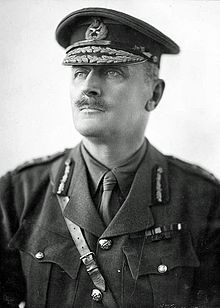The Big Push for June was the Battle of Messines, which marked the beginning of Britain’s Flanders Offensive; like the French they apparently could not wait for the Americans. The assault was launched on 7 June with the detonation of nineteen mines under the German lines, catching the enemy by surprise and promptly killing 10,000 troops. The mining had begun in 1915 – so little had the front changed – and 454 tons of explosives went up in twenty seconds, dwarfing the Somme mines and creating the largest explosion in history before the Trinity bomb.
The effectiveness of the British mines and creeping barrage allowed the most important objective, the Messines ridge, to be taken on the first day, and when the battle ended a week later, it remained in Allied hands. The offensive was certainly a tactical success, gaining the high ground, as it were, and setting the stage for the next advance, but one (who was not an Allied general) might question the strategic gain. The ridge cost each side some 25,000 casualties.
Certainly a greater boost to Allied morale was the arrival of General John Pershing in France on 13 June and 14,000 troops of the American Expeditionary Force on the 25th. The Allied commanders wanted to immediately send them to the front, but Pershing wanted more training and was adamant that his boys would fight as American units not simply replacements. The doughboys (from the adobe dust in the Mexican war?) would not hit the trenches for another several months, but their presence was already a clear boost to morale.
Speaking of morale, on 8 June the French military began seriously dealing with the mutiny with arrests and courts-martial, but with surprising restraint, which annoyed many of the generals. Nevertheless, Philippe Pétain, the new Chief of the General Staff, and President Raymond Poincaré supported a lighter touch, and while there were 629 death sentences handed down, only 43 executions were actually carried out. More effective in restoring order was the institution of regular leaves and a promise of only severely limited offensives until the Americans arrived in strength.
On the Greek “front” the Allies demanded on 11 June that King Constantine abdicate, which he did the following day, passing the throne to his son, who became Alexander I. Alexander was clearly a puppet of the Allies, who now occupied more Greek territory, but under his “rule” Greece would benefit from the Allied victory. Unfortunately for Alexander, he would die from a monkey bite in 1920, to be succeeded, ironically, by his father. Venizelos, leader of the provisional government in Salonika, became Prime Minister on 26 June and took power in Athens the next day. Greece was now formally at war with Germany, Austria-Hungary, Bulgaria and the Ottoman Empire.
Off in the new Russian Republic the Provisional Government turned down a German offer of an armistice on 9 June, perhaps not a good decision inasmuch as by 21 June the Black Sea Fleet was in full mutiny. Kerensky believed that a successful offensive in Galicia in July would restore military morale.
In miscellaneous news, Italy announced a Protectorate over Albania on 3 June…and on 8 June the Tenth Battle of the Isonzo ended with no gains and 150,000 Italian casualties. To the southeast Edmund Allenby, formally of the Western Front, took over Commonwealth forces in Egypt, bad news for the Turks. And Colonel Lawrence and Auda Abu Tayi (“I am a river to my people.”) and his Howeitat were on their way to Aqaba.



















